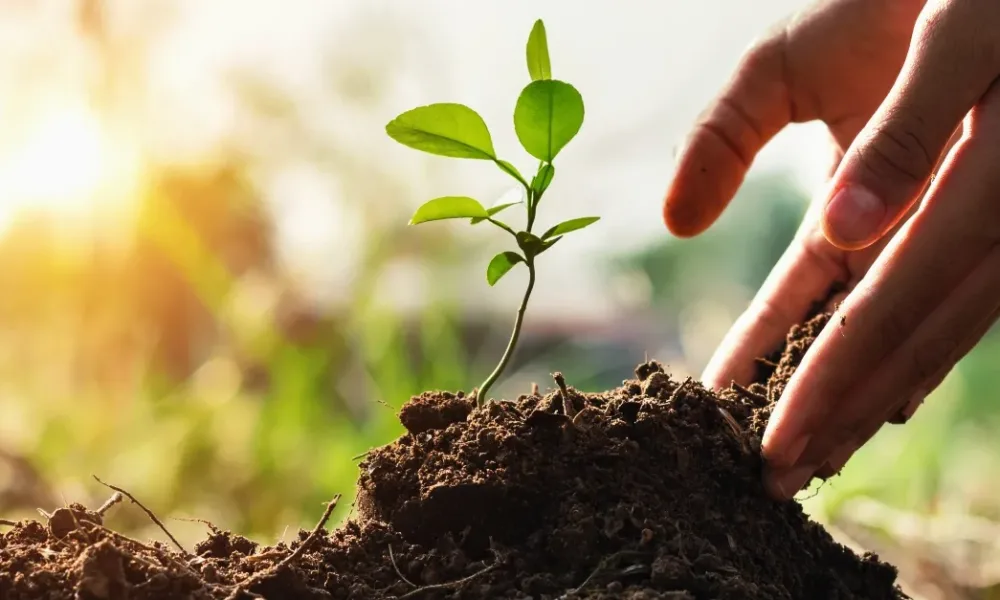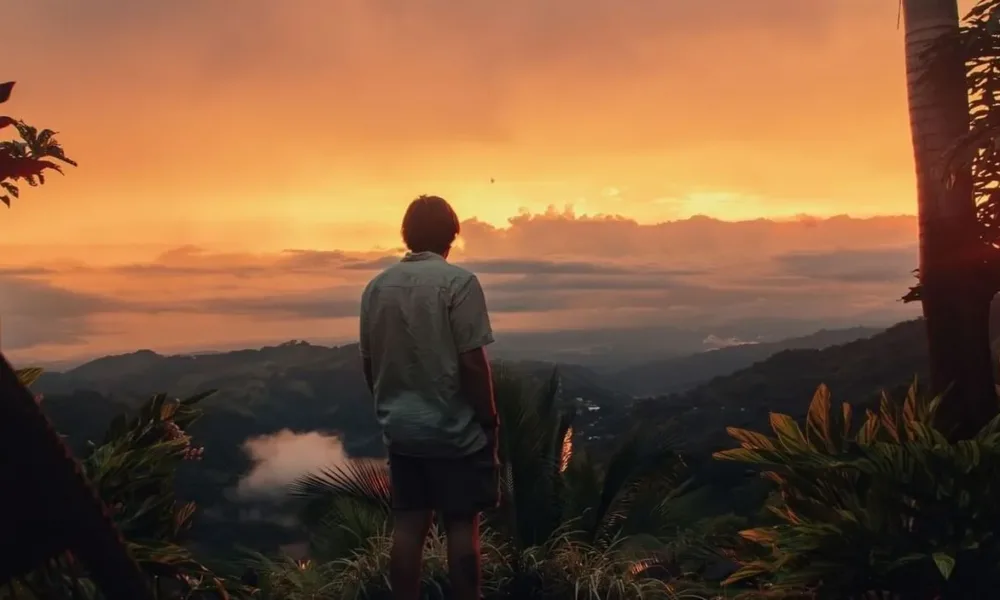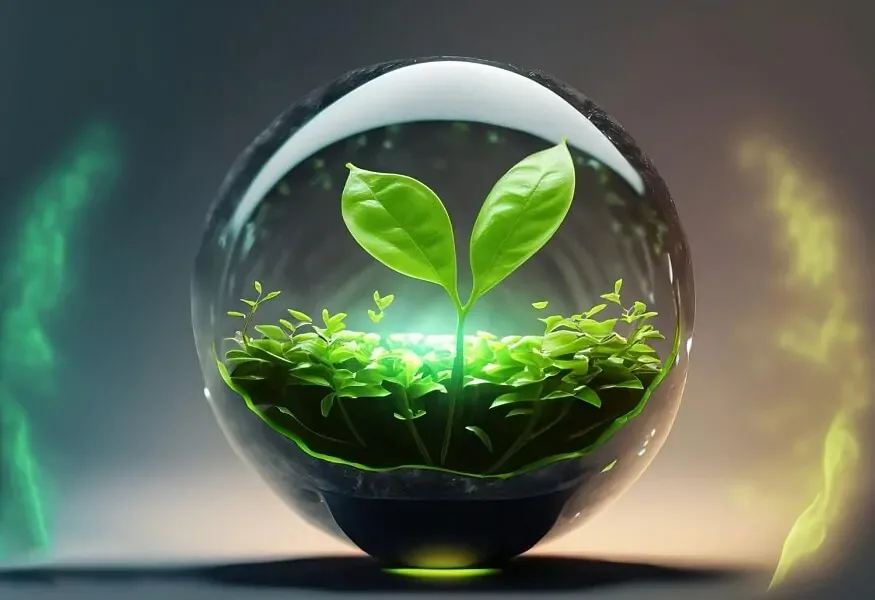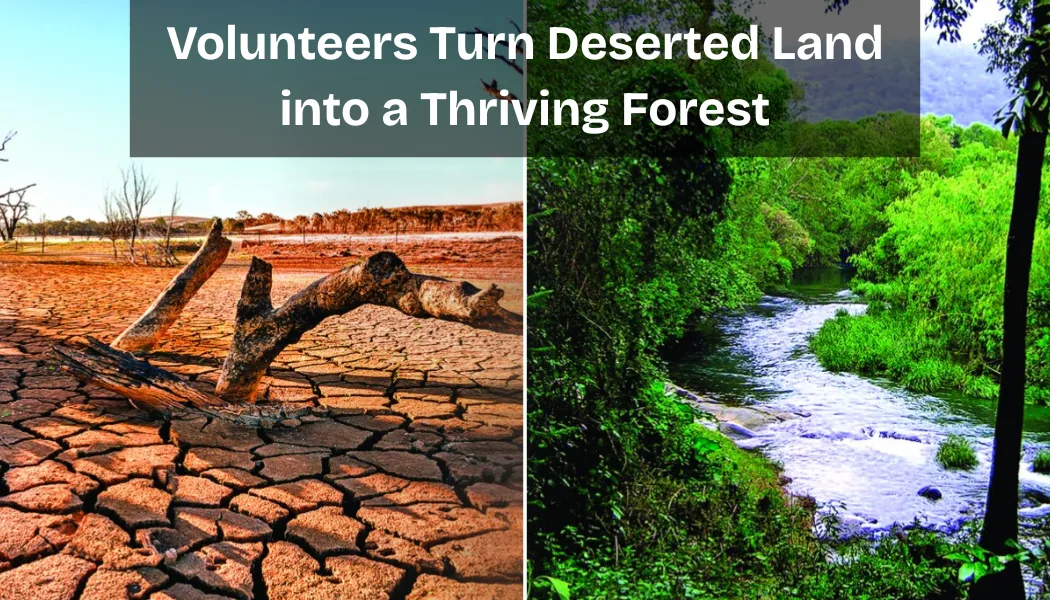It began with dust.
A stretch of land — cracked, silent, forgotten — sat at the edge of a small town. Years of drought and neglect had left it lifeless. Nothing grew there except stubborn weeds and memories of what once was.
But then, a few volunteers arrived with nothing more than hope, shovels, and the belief that nature, like people, could heal when given care.
Fast-forward a few years, and that barren patch of earth has become a thriving green oasis. Trees sway in the wind. Birds nest in the branches. The soil hums with life. What was once a wasteland now breathes again — thanks to human hands guided by compassion and persistence.
This is the story of how volunteers turned deserted land into a living, thriving forest — and, in doing so, rekindled the spirit of an entire community.
Table of contents
- The Forgotten Land
- The Spark of an Idea
- The Beginning: Planting in Faith
- Community Awakening
- The Science Behind the Green
- A Symphony of Life Returns
- The Heart of Volunteering
- Challenges Along the Way
- Partnerships That Made It Possible
- Transformation Beyond the Trees
- The Emotional Landscape: Healing Through Nature
- From Local to Global Inspiration
- Mindfulness in Action
- Lessons from the Forest
- Environmental Impact at a Glance
- The Future: Sustaining the Green Dream
- Personal Reflections: When Trees Teach Us Humanity
- A Global Movement of Regeneration
- What You Can Do
- Quotes from the Ground
- The Broader Lesson: Humanity’s Second Chance
- Closing: The Forest That Teaches Hope
The Forgotten Land
The land, once used for farming, had been abandoned decades ago after water sources dried up and soil erosion made cultivation impossible. Locals began calling it “the sleeping ground” because nothing seemed to wake it.
Wind carried dust into nearby homes. Summers felt hotter, winters harsher. Without trees, the land lost not only its greenery but also its resilience.
For many, it was a hopeless place — but not for everyone.
The Spark of an Idea
It started with one conversation among environmental volunteers who believed reforestation could change everything. What if they could bring back life to this forgotten land?
Their idea wasn’t just about planting trees; it was about restoring balance, reconnecting people to the earth, and proving that regeneration is always possible — even in the harshest places.
They called their movement “Roots of Hope.”
The Beginning: Planting in Faith
The first day of work was far from glamorous. The sun blazed overhead. The soil cracked beneath every step. Most seedlings withered before taking root.

Yet the volunteers — students, farmers, retirees, and children — didn’t give up. They carried buckets of water from distant wells. They built small trenches to capture rain. They protected young saplings with recycled bottles and bamboo covers.
Every weekend, they returned. Every season, they learned — adjusting, experimenting, failing, and trying again.
One volunteer recalled,
“In those early months, people laughed at us. They said we were planting hope in dry sand. But that’s exactly what we were doing.”
Community Awakening
As the months passed, something beautiful happened. Curiosity replaced skepticism. Villagers who once watched from afar began joining in. Some offered tools, others shared stories of the land’s history.
Children started playing in the newly dug trenches, helping carry seedlings. Women organized water-sharing teams. The project evolved from an environmental effort into a community movement.
Mindfully, one act of planting at a time, people reconnected with the earth — and with each other.
The Science Behind the Green
To make the project sustainable, the volunteers collaborated with environmental experts. They introduced techniques like:
- Rainwater harvesting: Small earthen check dams and trenches to store rainfall.
- Miyawaki method: Planting dense, native species close together to accelerate growth.
- Composting and mulching: Using organic waste from nearby villages to enrich the soil.
- Biodiversity planning: Combining fast-growing species (like neem and acacia) with long-term trees (like banyan and tamarind).
These steps turned the once-dry land into a moisture-retaining ecosystem. Within two years, the first canopy began forming. The air grew cooler. Butterflies returned.
A Symphony of Life Returns
By the third year, transformation was visible from space — literally. Satellite images showed the brown patch turning green. Birds that hadn’t been seen in years — mynas, kingfishers, and sparrows — nested in the branches.
Wildflowers carpeted the ground. Rainfall increased locally. The soil, once dead, began teeming with worms and fungi.
A local farmer summed it up beautifully:
“The forest gave us back our seasons.”
The Heart of Volunteering
The success of this project wasn’t measured in hectares of trees alone but in the human spirit it revived.

Volunteers described how the experience transformed them:
- “I used to scroll on my phone every weekend. Now I plant trees with my friends.”
- “When I’m in the forest, I feel grounded. It’s like meditation.”
- “My children now understand patience — they see growth, not instant results.”
Every tree became a teacher. Every seedling a reminder that small, consistent actions create massive change.
Challenges Along the Way
Of course, it wasn’t all easy.
There were long droughts. Funds ran out. Some seedlings were destroyed by grazing animals. But each challenge inspired creative solutions:
- They built low fences using discarded branches.
- They trained local youth in nursery management to reduce costs.
- They introduced community composting to feed the soil.
Perhaps the biggest lesson was resilience — the same resilience found in nature itself.
Partnerships That Made It Possible
What started as a local movement soon caught the attention of environmental NGOs, local governments, and even corporate social responsibility (CSR) programs.
Partnerships brought in resources for water conservation systems, sapling nurseries, and training workshops. But leadership always remained community-driven.
The mantra was clear: “By the people, for the planet.”
Transformation Beyond the Trees
The forest’s impact extended far beyond ecology.
- Economic Revival: Locals began selling organic compost, forest honey, and herbal plants.
- Education: Schools introduced environmental clubs, taking students to the site for lessons in biology and civic responsibility.
- Tourism: The green space became a small eco-park, attracting nature enthusiasts and photographers.
- Well-being: Villagers reported cooler temperatures and cleaner air — reducing heat-related illnesses.
A single act of planting had blossomed into social, economic, and emotional renewal.
The Emotional Landscape: Healing Through Nature
For many volunteers, the forest became a place of healing.

One of them, Anaya, shared:
“When my father passed away, I planted a tree for him. Watching it grow helped me heal. Now, it stands taller than me — a living memory.”
Another volunteer described the experience as “therapy in soil form.”
In restoring the land, people restored themselves.
From Local to Global Inspiration
The story soon went viral on social media, inspiring similar initiatives worldwide. Environmental groups from Africa, Southeast Asia, and Latin America reached out to learn how communities could regenerate land through volunteer action.
The “Roots of Hope” team began mentoring others, proving that you don’t need massive funding to start change — just commitment, collaboration, and care.
Mindfulness in Action
Although not labeled as such, the volunteers practiced mindfulness throughout their journey.
- They worked with patience, not urgency.
- They observed nature’s rhythms before interfering.
- They listened — to the soil, to each other, and to silence.
In a sense, the forest became a living meditation, teaching that growth happens quietly, beneath the surface, until one day, it bursts forth into full bloom.
Lessons from the Forest
- Start Small, Stay Consistent
Big change begins with small steps — a single sapling, a single volunteer. - Work with Nature, Not Against It
Restoration means listening to ecosystems rather than imposing on them. - Community Is the Core
When people feel ownership, they protect and nurture their environment. - Patience Is Powerful
Nature works on its own timeline — growth can’t be rushed. - Hope Is Contagious
One act of care inspires another — and soon, the world changes.
Environmental Impact at a Glance
- Over 50,000 trees planted across 80 acres.
- Soil fertility improved by 60%.
- Average local temperature dropped by 2°C.
- Bird biodiversity increased threefold.
- Rainwater retention rose significantly, recharging nearby wells.
These aren’t just statistics — they’re proof that human effort and natural processes can coexist beautifully.
The Future: Sustaining the Green Dream
The volunteers now focus on the next phase: ensuring the forest thrives for generations.

- Forest Watch Groups monitor growth and prevent illegal cutting.
- Eco-education programs train children as “Green Guardians.”
- Sustainable income sources — like seedling sales and eco-tourism — support maintenance costs.
The vision is clear: a self-sustaining ecosystem cared for by the very people who revived it.
Personal Reflections: When Trees Teach Us Humanity
Standing under the canopy, one can sense the invisible lessons these trees whisper:
“Grow where you’re planted.”
“Give shade even when unthanked.”
“Stand tall, bend gracefully.”
Volunteers often describe moments of quiet awe — feeling small yet significant, connected yet humble. The forest reminds them that all life is intertwined, that healing the planet means healing ourselves.
A Global Movement of Regeneration
Across the world, similar volunteer-led green miracles are taking place — from Kenya’s Green Belt Movement to India’s Miyawaki forests and community mangrove planting in the Philippines.
Each story proves that ordinary citizens, united by purpose, can reverse environmental decay.
The “Roots of Hope” forest stands as part of this global chorus — a living testament that we can turn despair into growth, and destruction into renewal.
What You Can Do
You don’t need acres of land to make a difference.
You can start today — right where you are:
- Plant a tree in your backyard or balcony.
- Join a local clean-up or tree-planting drive.
- Support community forests through donations or advocacy.
- Reduce waste and practice mindful consumption.
Each act of care, no matter how small, feeds the planet’s pulse.
Quotes from the Ground
“We thought we were saving trees. It turns out the trees were saving us.” — Ravi, volunteer
“Every time I water a sapling, I feel like I’m watering hope.” — Meera, student
“The forest doesn’t just belong to us — we belong to it.” — Elder resident
These words echo what science now confirms: environmental restoration isn’t just ecological; it’s emotional and spiritual.
The Broader Lesson: Humanity’s Second Chance
Our planet faces many challenges — climate change, deforestation, water scarcity — but this story proves one thing: regeneration is possible.
When people choose collaboration over consumption, when they plant instead of extract, nature responds with abundance.
The forest that rose from dust is more than greenery — it’s a message. A reminder that healing begins with belief, that every small act counts, and that when hands unite for good, miracles become measurable.
Closing: The Forest That Teaches Hope
Today, as sunlight filters through the leaves, the once-barren land hums with life. The wind carries not dust but fragrance. Children play in the shade of trees their parents planted. Birds sing where silence once reigned.
The volunteers often return — not to work, but to sit, breathe, and marvel. They know they’ve changed the landscape forever, but perhaps more importantly, the forest has changed them.
Because when people plant trees, they plant more than roots — they plant hope, connection, and continuity.
Stay Inspired on Your Sustainability & Hope Journey
If this story filled you with awe at what people can achieve together, here are a few more powerful reads that celebrate the magic of renewal, nature’s resilience, and the human spirit that refuses to give up on our planet:
- Once-Extinct Plant Found Growing Again in the Wild – Proof that nature always finds a way to return when given a chance.
- Patagonia Azul: Argentina Establishes Massive Marine Reserve – Explore how large-scale conservation is protecting life below the waves.
- Bradford Pennine Gateway Becomes New National Nature Reserve – A reminder that regeneration begins when communities come together.
- Spix’s Macaw Returns to the Wild: A Historic Step in Wildlife Conservation – A breathtaking comeback story of one of nature’s rarest birds.
- Healing Through Action: A Family’s Legacy in Ocean Conservation – How a single family’s purpose-driven mission is helping the planet heal.
